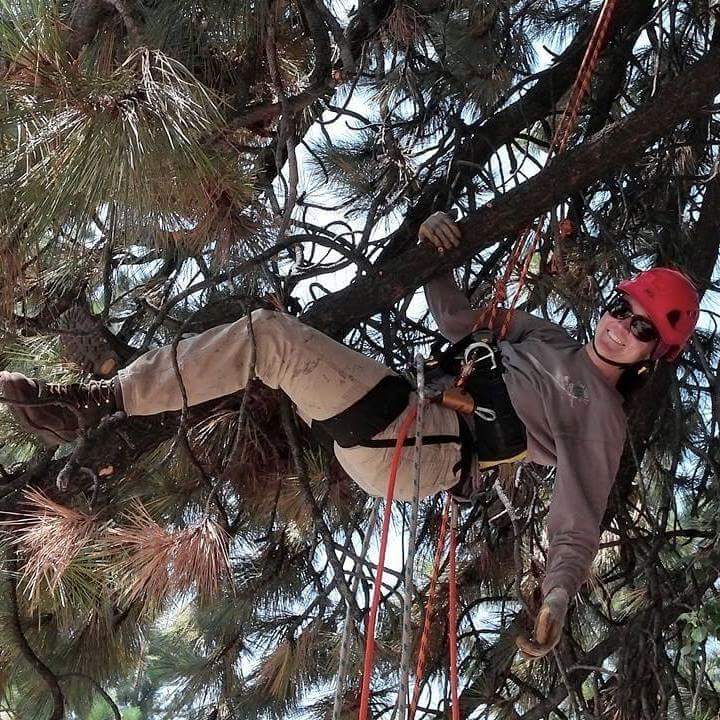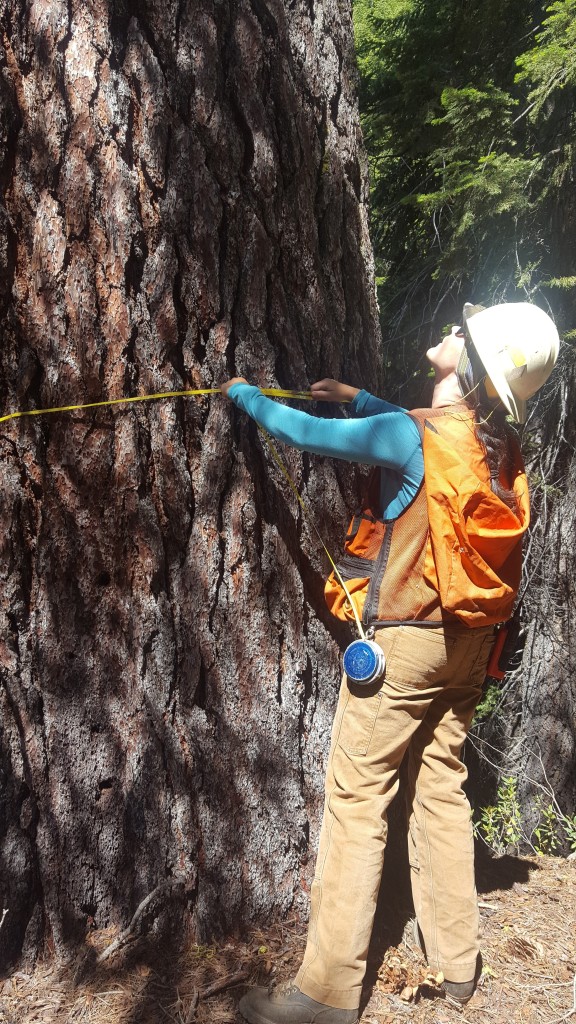Photos courtesy of Olivia Roe
Olivia Roe, a silviculturist in the Sierra National Forest, loves pinecones.
“I have kind of an obsession with pinecones,” she says. So much so that she will soon need a new bookshelf for the 50 specimens she keeps in her office.
Surrounded her pinecones, Olivia tends to trees across the Sierra National Forest. Her job is to cultivate trees so that they can best produce resources like shade, fruit, or timber for the forest.

“Silviculture is the practice and the science of controlling the growth and the composition and the quality of the trees to meet the values and needs of the stakeholders,” she describes.
A typical day on the job varies for Olivia. One day she might be looking at baby trees to see if they are being eaten by deer. The next day she might be collecting pinecones to process for seeds. Another day she might be cutting trees or working on a fire.
“The Forest Service has always been really great for providing that variability in my job,” Olivia says. “It just never gets boring and there’s always something new happening.”

She primarily works on monitoring the health of her stands. A stand is an area of trees that the Forest Service has defined as a unit, with boundaries drawn by roads, rivers, changes in elevation, or other geological markers. The trees are monitored as a group to ensure the health and productivity of the whole stand.
Olivia and the other silviculturists in the forest are monitoring for dramatic changes among the trees. One change which concerns Olivia is a type conversion: when the normal mix of trees stop growing and are replaced with different species. In some areas of the forest, up to 80% of pine trees have died. With fewer pine trees to compete with, plants such as manzanita spring up, creating thick brush which fuels increased wildfires.
“Devastating fires, that have caused severe damages and millions of dollars’ worth of restoration,” explains Olivia.
Dead trees also pose a risk to visitors in the forest. They are strictly removed from campgrounds, but visitors who are camping in undeveloped areas may unwisely set up underneath a dead tree or branch. Olivia recommends looking up, as well as down when picking a campsite in the Sierra National Forest.
She says you should stand far back from the place you intend to camp that night and look at the trees above and around your site. If there are any dead branches, you should not camp underneath them. And if there are any dead trees, you should always be twice their height away.
If you have any questions while in the forest, Olivia recommends asking forest staff.
“People flag me down all the time when I’m in the field and I never hesitate to stop and talk to them,” she says cheerfully.
Visitor’s centers are also great resources with knowledgeable staff and a plethora of books. One book which Olivia recommends is “Gifford Pinchot and the Old Timers” which is a collection of accounts written by some of the first foresters.
And for any fellow pinecone enthusiasts, Olivia suggests learning more from the Society of American Foresters.
“Not a lot of people know what silviculture is. They’re like, ‘What? And how do you spell that?’,” she laughs.
But Olivia’s work and the work of other silviculturist has led to an increased understanding of forests systems. Her careful attention to trees will help ensure that we have a productive and renewable forest for years to come.

One thought on “Spotlight on Silviculture”